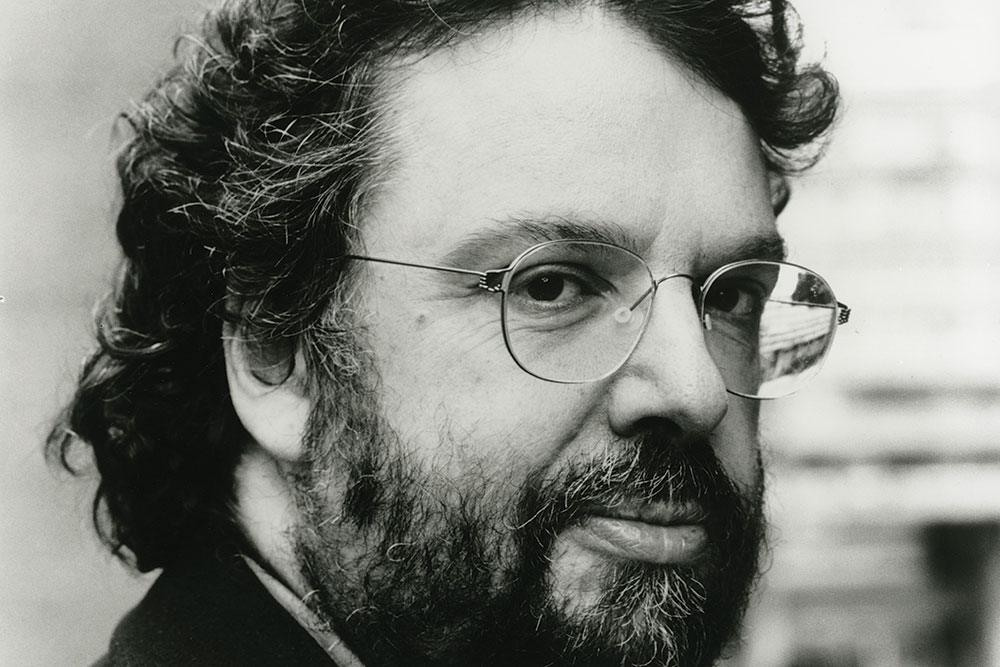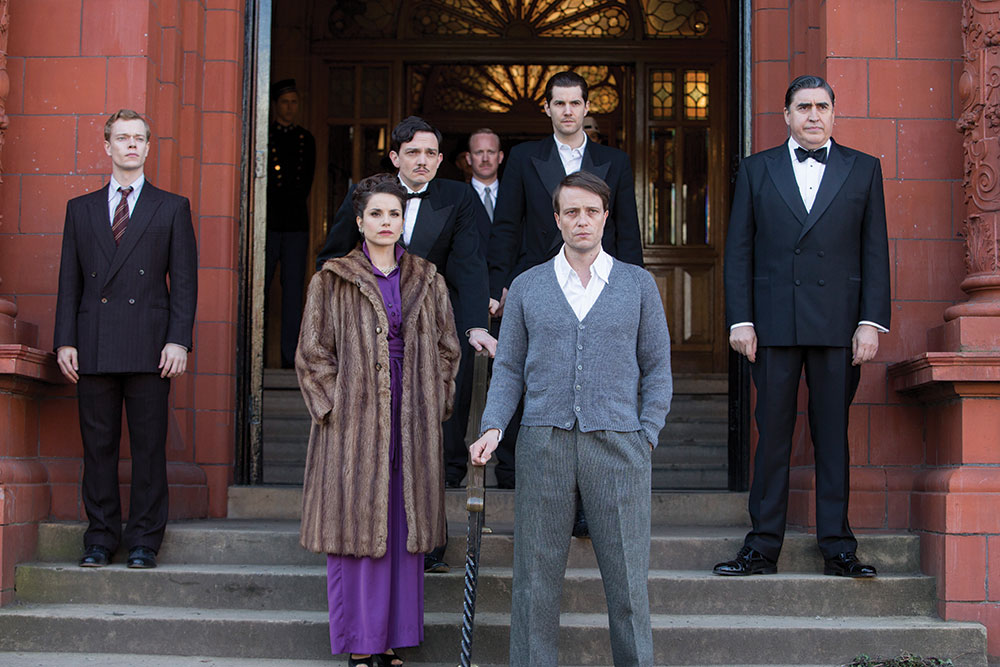
After more than 35 years of operation, TBI is closing its doors and our website will no longer be updated daily. Thank you for all of your support.
In the spotlight: Stephen Poliakoff
 British writer and director Stephen Poliakoff’s award-winning work spans more than three decades on both the big and small screen. Much of his TV output has been for the BBC, starting with one-off television plays and then taking in notable series such as Perfect Strangers, Friends & Crocodiles, The Lost Prince and Gideon’s Daughter.
British writer and director Stephen Poliakoff’s award-winning work spans more than three decades on both the big and small screen. Much of his TV output has been for the BBC, starting with one-off television plays and then taking in notable series such as Perfect Strangers, Friends & Crocodiles, The Lost Prince and Gideon’s Daughter.
Having more recently made 1930s drama Dancing on the Edge, which was well-received on both sides of the Atlantic, he is back with another period piece for the BBC, Close to the Enemy (pictured below), which is from Little Island Productions in association with Endor Productions for BBC Two. Set in bombed-out post-war London, it follows British intelligence efforts to recruit a German scientist to their cause. All3Media International will launch the show at MIPTV. Poliakoff tells Stewart Clarke about his new series, and his influences.
 My inspiration for Close to the Enemy
My inspiration for Close to the Enemy
The genesis came about after I had finished Dancing on the Edge and was talking with the BBC about a second season. I had written a lot about the thirties, the era in which Dancing on the Edge is set, but was also excited about taking another pivotal moment in modern history, so Close to the Enemy is a sort of follow-up.
It is set the year after the Second World War has finished, the incredible moment when the Cold War was already starting. We, the victorious allies, were literally grabbing people off the streets of Germany who we thought might be useful, bringing them over here and trying to get them to work for us, especially in the defence industry.
Society was still semi-militarised and armed forces were still in stately homes and schools, and using hotels to entertain or put up those people snatched from Germany.
Adrenaline was pumping through everyone during the war – whether they were in the action or a city that was being bombed – and suddenly that all stopped. Of course, that adrenaline didn’t stop.
My approach to the period setting
When things are set after the war, they are often film-noir-like, foggy and rainy. But the reality was that the light was blindingly bright, especially in the summer, because there were so many holes in the streets and so many blocks were gone. Where there used to be a large building in front of you, there was often nothing.
I’ve tried to give the show that look: very visceral and alive, and different from what is associated with that time.
How I research my stories
I work with a researcher and do a lot on each subject I’m tackling. I have an idea of a story and then see if history backs it up.
This one is on an epic scale and churns along at a pace. Normally my work is associated with a rather hallucinatory, poetic style, but this one heaves along because of the jagged nature of that time.
The emerging talent I have worked to bring through
I have worked with a lot of people at the beginning of their stellar careers.
Emily Blunt won a Golden Globe for Gideon’s Daughter, and she wasn’t really known to the public before. That, along with The Devil Wears Prada, was her breakthrough role.
Similarly, years ago I worked with Clive Owen (The Knick) and gave him his first two leading roles in film after he’d been in telly (Century and Close My Eyes). More recently I worked with Ruth Wilson (Luther, The Affair) and Rebecca Hall (Joe’s Palace), and Tom Hardy was in Gideon’s Daughter early in his career. I gave Gemma Arterton (Quantum of Solace) her first role while she was still at drama school.
My stories usually mix younger and older age groups, so I need young actors. Every couple of years there is a crop of exciting young actors coming up, whom you meet at auditions. I’m attracted to people with a bit of charisma, a whiff of danger, and they tend to be the actors who make it.
[The recognition for up-and-coming talent] is also a tribute to Andy Prior, the casting director I have been working with for the past 20 years. Between us we have scored quite a lot in terms of predicting new people [who have gone on to become stars].
 How we cast Close to the Enemy
How we cast Close to the Enemy
Everybody in Close to the Enemy has worked in various projects, but we have cast people in surprising ways.
For instance, Freddy Highmore, a child actor of great success who also had a hit with Bates Motel, is one of two male leads. He was a revelation, and we have shown him to be a true leading actor and a real star.
Jim Sturgess has made a lot of films but had hardly worked in television; certainly not since becoming a leading actor. Again, he is cast slightly against type.
Alfred Molina told me he had never played a posh part before, which is extraordinary, and Angela Bassett, playing a singer in the hotel, gives an extraordinary performance, which isn’t a surprise. What is, is that she sings all of the songs in the series, but had never sung on screen aside from one small duet, despite being Oscar-nominated for [Tina Turner biopic] What’s Love Got to Do With It.
The people I have worked with in my career
I started in the theatre when I was very young, so I have obviously worked with a lot of people.
My early experience in writing single TV films meant working with a number of people who were to become well-known directors, like Michael Apted (Gorillas in the Mist), Stephen Frears (Philomena), [Royal Shakespeare Company founder] Peter Hall and Charles Sturridge (Shackleton), who made a Play for Today [teleplay] that was mine, right after he had done Brideshead Revisited.
The person who changed my career
I wouldn’t say there is just one person that has influenced me. But I think the one person that informed me in a particular way was the famous director of photography
Chris Menges, who shot The Killing Fields and won Oscars. He shot my TV film Bloody Kids, which Stephen Frears directed way back when I was only 25.
Chris told me after we’d finished that I should direct my own work. Since he was hugely experienced, and said exactly what he wanted, it made a big impression on me, even though it took me several years to act upon it. It was a real vote of confidence. Chris had seen me on-set with Stephen and realised I had a grasp of the practicalities of filmmaking, so that one encounter informed me more than working with any director has.
My take on the ‘golden age of drama’
Obviously there is a lot of drama, and there is money for drama and new outlets like Amazon and Netflix out there. Whether it is a ‘golden age’ I’m not so sure. That depends on how many works created now have the power to last, and how many are just filling the marketplace. We don’t know that yet.
There are obviously some shows like Breaking Bad that will last, but whether X, Y and Z, which have big posters all over town because they are being promoted by whichever big outlet, will do so, I don’t know.
What I do think is that television is the dominant art form internationally at the moment; it is much more powerful than movies. Obviously Star Wars will still make billions, but television drama is much more influential than movies now, and that hasn’t always been true. In that sense it is a golden age, because it is a dominant moment.
The reception my shows get
My work may be niche, but it has been of considerable commercial value to broadcasters. I’ve never courted and written specifically for the American market, but my work has consistently won awards there. The Lost Prince won PBS its first drama Emmy for many years, BBC America won Golden Globes for Gideon’s Daughter, and Starz won a Golden Globe for Dancing on the Edge.
Awards are important – especially if you’re not a huge broadcaster like HBO or the BBC. It’s especially true in America, where channels can use [awards] to boost their profile and subscriber base.
Look at Breaking Bad or Orange is the New Black: it’s usually not the obvious ideas that score. In drama, the least risky strategy is to take a chance on an original idea, not do another pale imitation of whatever is on-trend, which right is Nordic-looking police drama, with officers moping around in the rain with a corpse in the mud.
What I plan to do next
Close to the Enemy is the biggest thing I have done: it’s seven hours and a big show. I’m fairly restless to write something contemporary, but on this particular afternoon, I’m not completely sure what I’ll do next.


